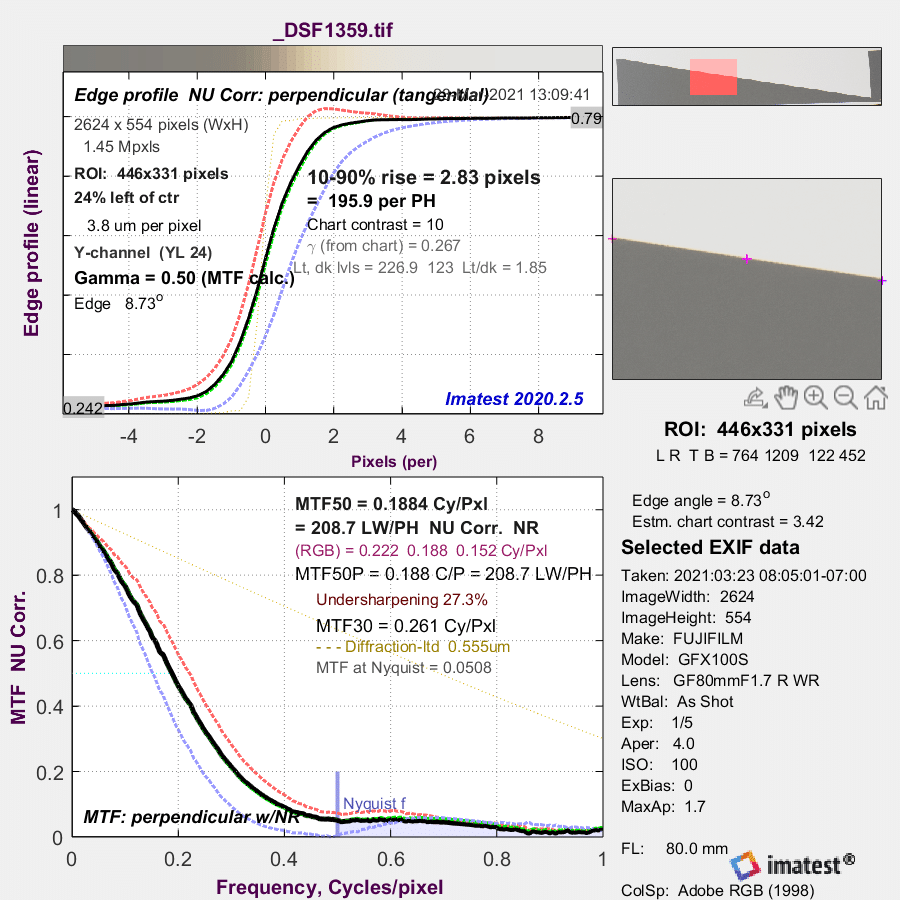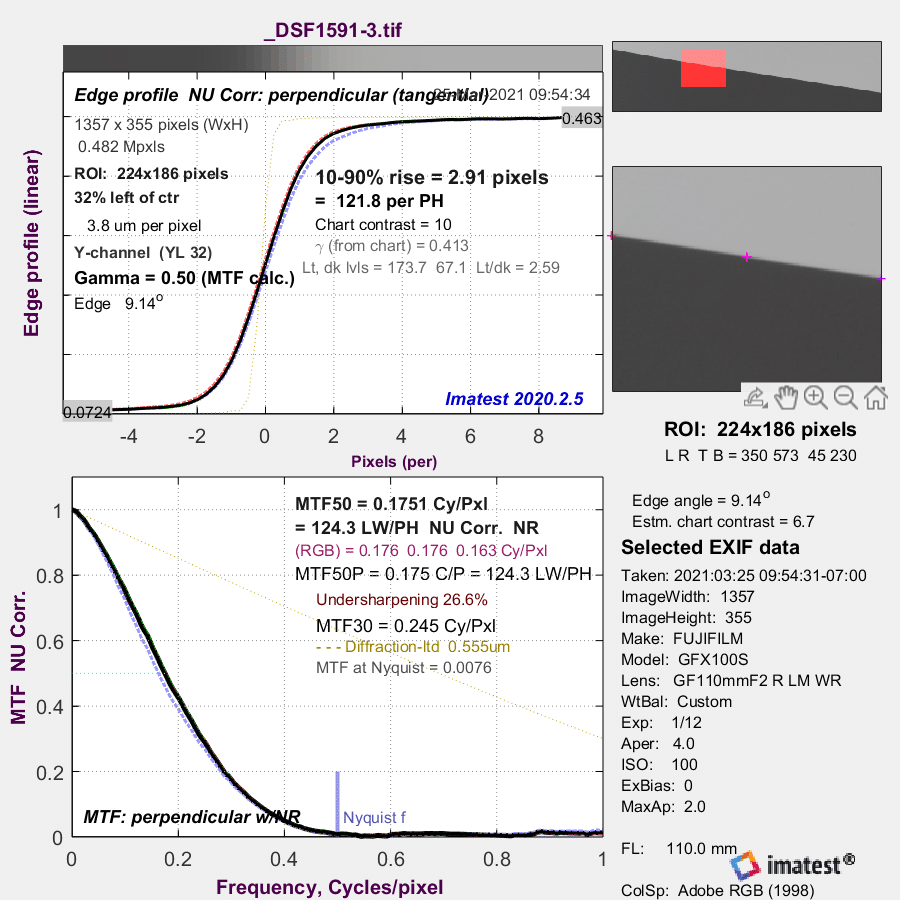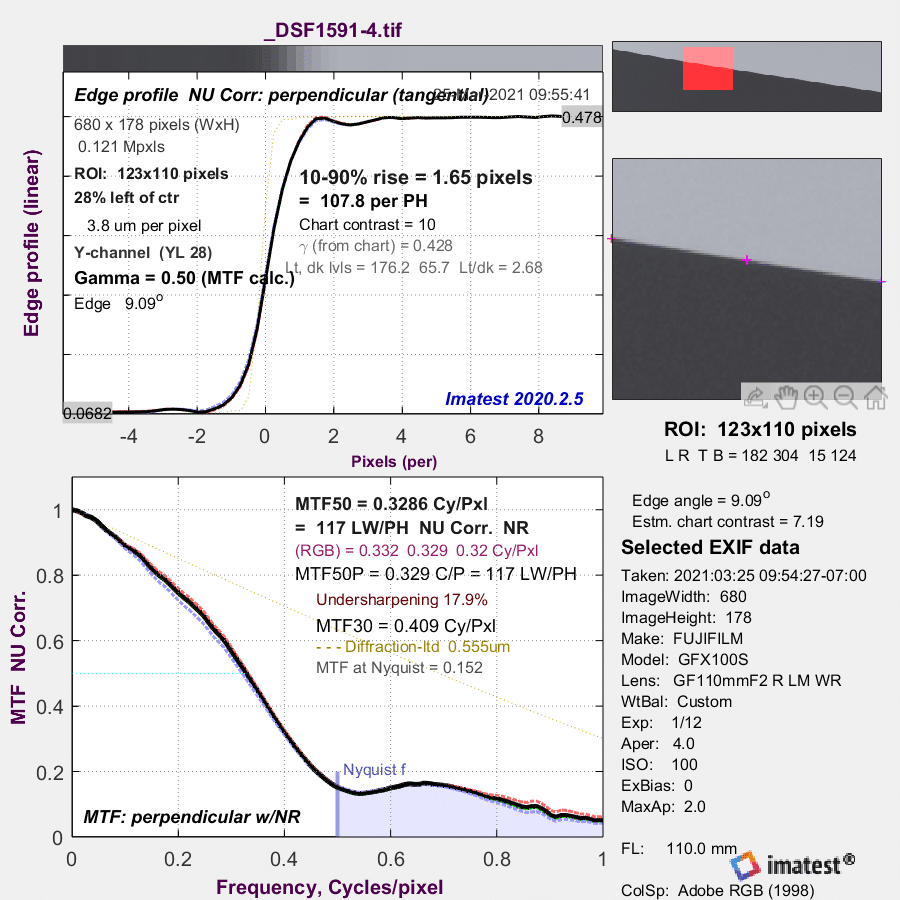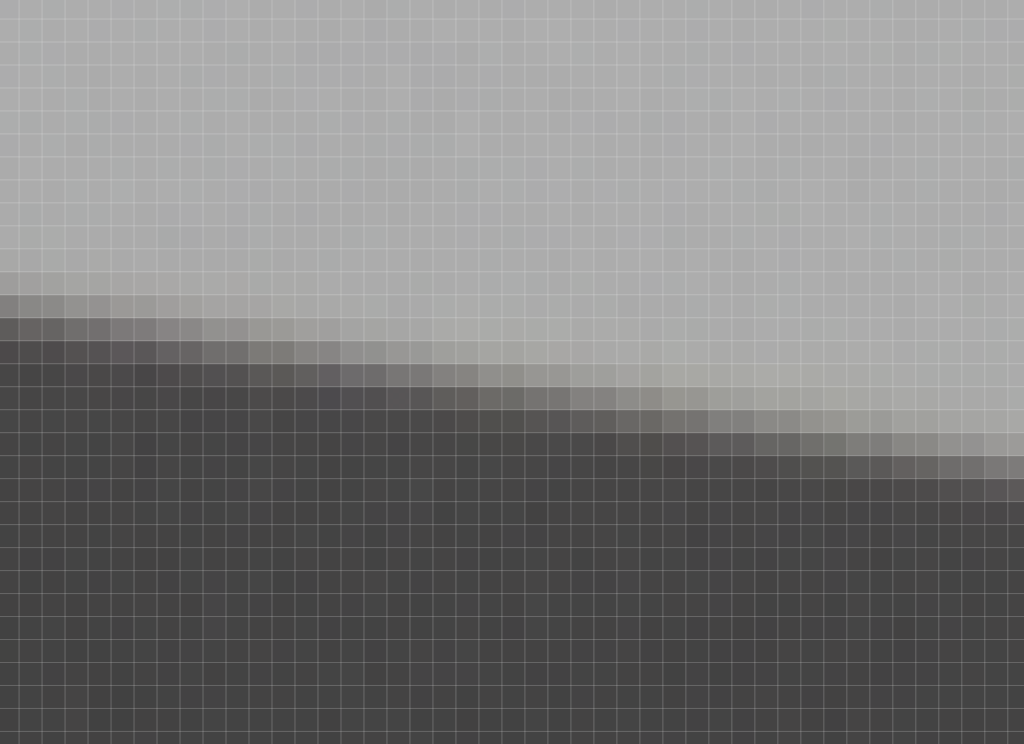This is one in a series of posts on the Fujifilm GFX 100S. You should be able to find all the posts about that camera in the Category List on the right sidebar, below the Articles widget. There’s a drop-down menu there that you can use to get to all the posts in this series; just look for “GFX 100S”.
In an earlier test, I looked at the Fuji GFX 100S pixel shift performance when used with the Fuji 80 mm f/1.7 lens and combined with the Fuji Pixel Shift Combiner desktop software. I noticed that there was a great deal of chromatic aberration in the pixel shifted image, and that is wasn’t nearly as visible in the single shot. That got me wondering if there was a problem with Fuji Pixel Shift Combiner.
I decided to run a similar test with the Fuji 110 mm f/2 lens, which is known to be well-corrected for longitudinal chromatic aberration (LoCA).
Here is the 80 mm f/1.7 plot that got me worried:

The protocol for the new test:
- 110 mm f/2 lens on the GFX 100S
- f/4
- C1 head
- RRS legs
- Sinusoidal Siemens star for focusing.
- Slanted edge above it
- Electronic shutter
The new result, developed in Lightroom 10.2 with sharpening turned off, and white balance to the gray of the slanted edge.
No chromatic aberration to speak of.
I guess I can blame the 80/1.7 for the pixel-shifted CA.
For the record, here’s what a single-shot image looks like:
The usual caveat about dividing the MTF30 and MTF50 numbers of the non-shifted image by two to compare them with the pixel shifted numbers applies. When you apply that to MTF50, you get 0.164 cy/px for the signal shot, versus 0.175 cy/px for the pixel-shifted image. The big difference is in aliasing.
By the way, there are some small-scale periodic artifacts in the pixel-shifted image.
I noticed this with the 80/1.7 images, too.



Hi,
I noticed that GFX100s has greater shutter shock the GFX100.
I sold away my GFX100 so unable to verify this fact but it seems that I can’t get sharp photo with GFX100s in mechanical shutter like I used to with GFX100 like 1/30s
Do you have the same finding as well?
With EFCS on, the shutter shock between the two cameras is the same. With EFCS off, what difference does it make?
With EFCS on, the rendering of the defocus area is slightly different from shots from the mechanical shutter. Hence usually I shot with mechanical shutter.
With mechanical shutter, GFX100, I’m able to obtain sharp focus about like 1/30s in the past, right now I’m not able to achieve the same result.
Hence wondering if the 100s lack of the same shock absorption mechanism.
Just my observation. curious to see anyone has the same observation. 🙂
And you can see this at 1/30 second? That’s amazing. Can you post links to images made both ways at 1/30?
Unfortunately I’m not able to do it now since I have sold my GFX100.
Both with EFCS and with MS using the GFX 100S would prove the point.